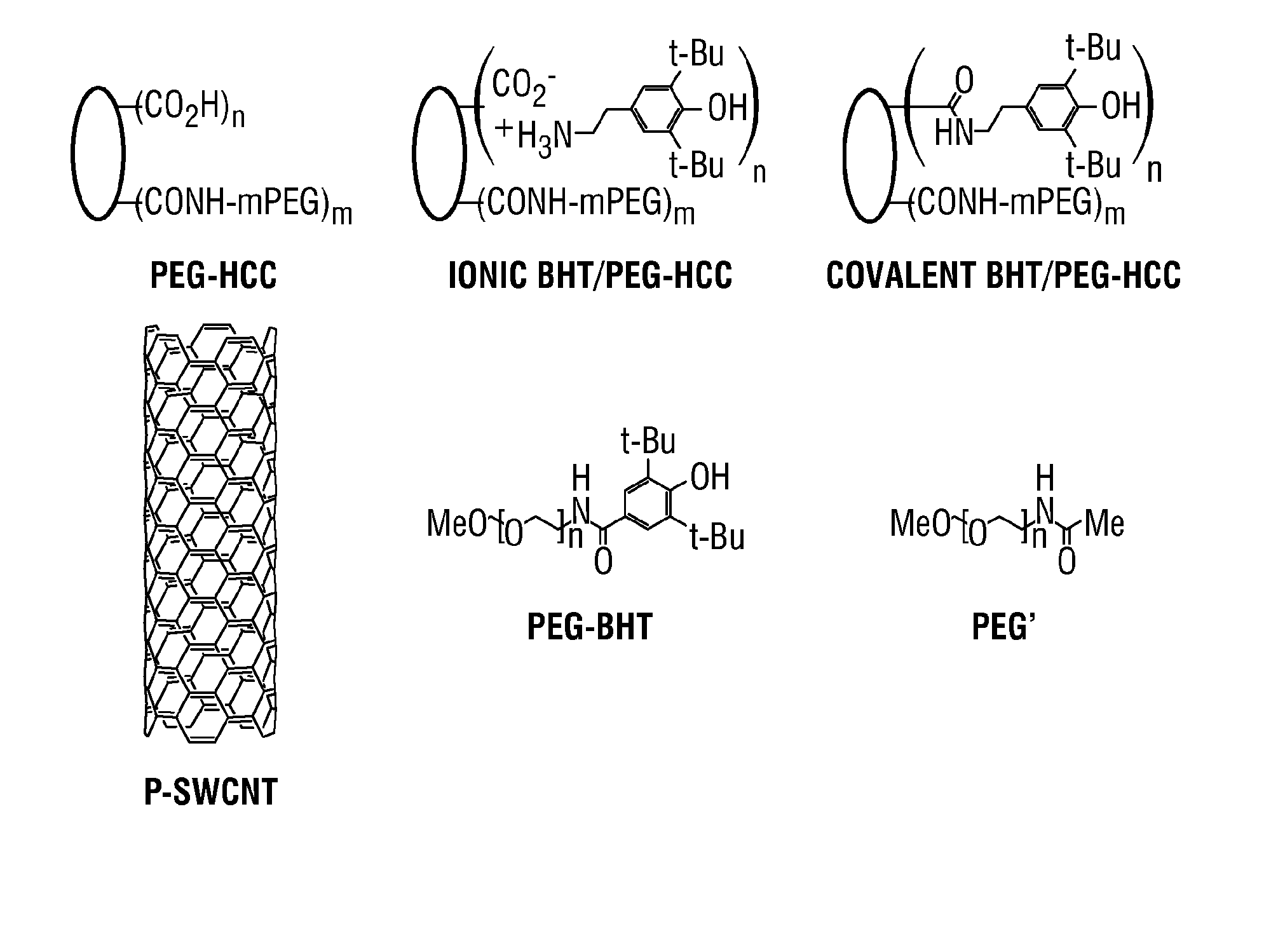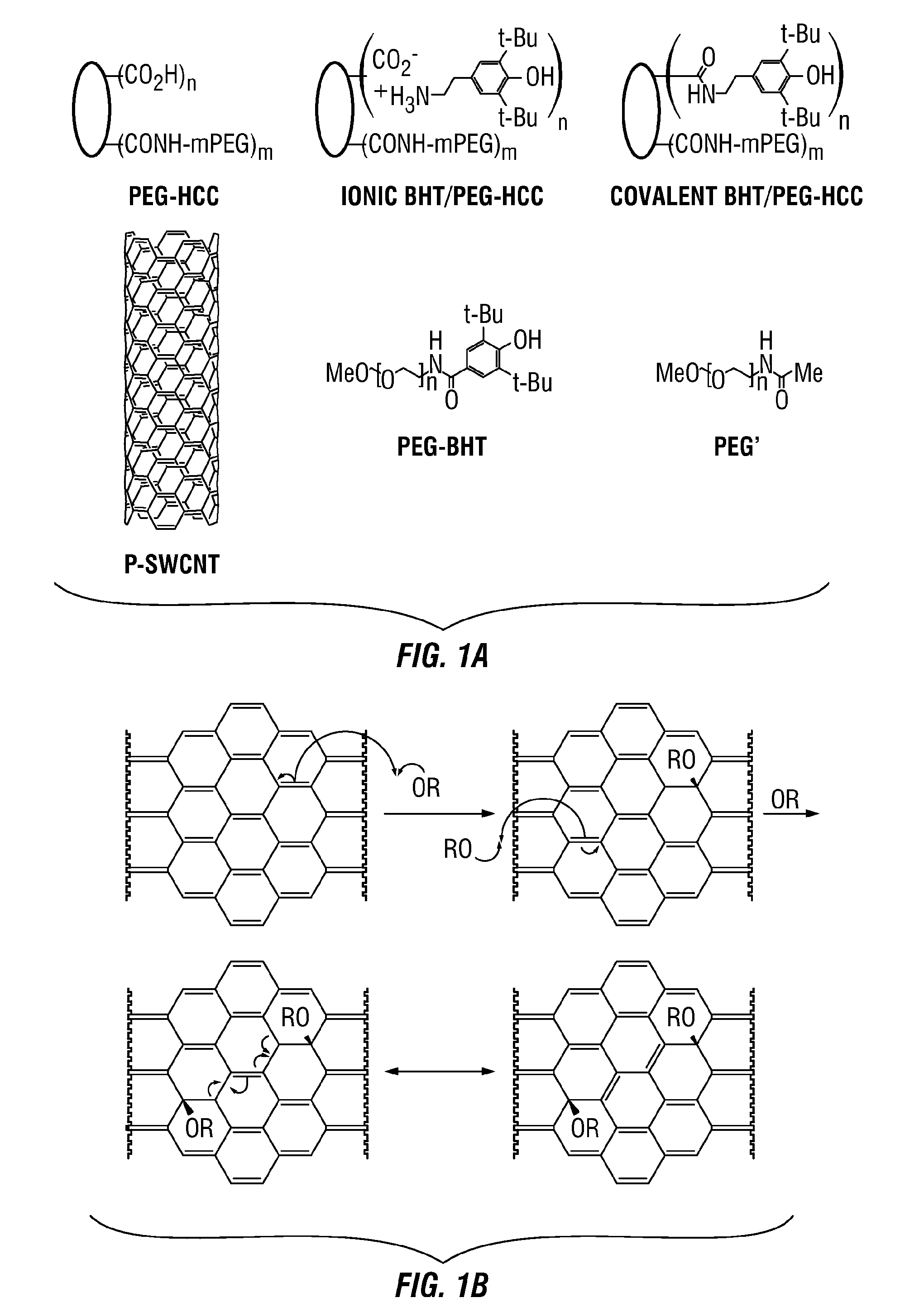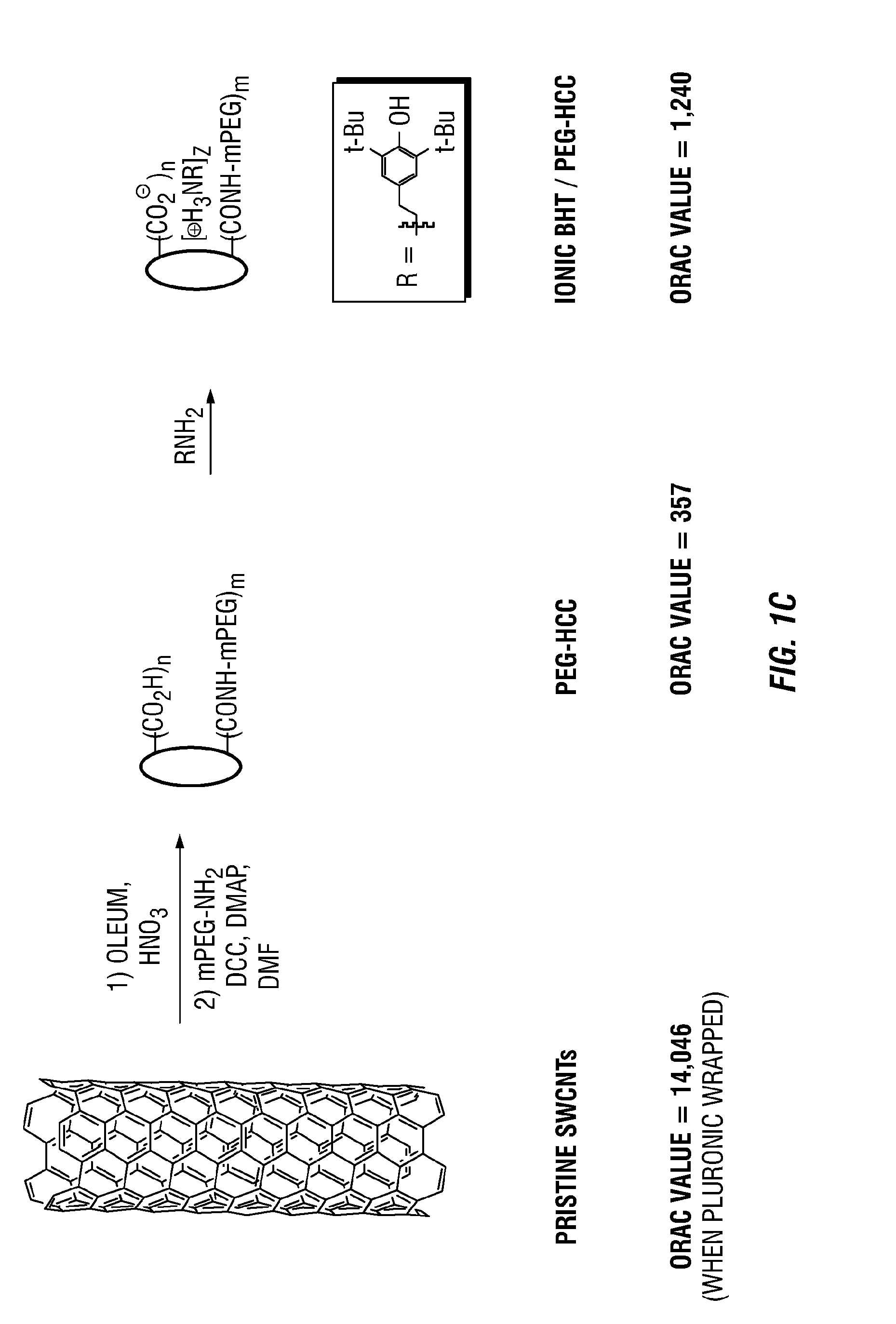Use of carbon nanomaterials with antioxidant properties to treat oxidative stress
a technology of antioxidant properties and carbon nanomaterials, which is applied in the direction of dna/rna fragmentation, drug compositions, medical preparations, etc., can solve the problems of numerous limitations in the efficacy and specificity of targeting desired sites of current methods of treating oxidative stress, and achieve the effects of facilitating the transport of carbon nanomaterials, and reducing the levels of reactive oxygen species
- Summary
- Abstract
- Description
- Claims
- Application Information
AI Technical Summary
Benefits of technology
Problems solved by technology
Method used
Image
Examples
example 1
PEG-HCCs for Treatment of Oxidative Stress Associated with mTBI
[0124]Example 1 pertains to the design of PEG-HCCs for targeted therapy of cerebrovascular dysfunction in mild traumatic brain injury. TBI involves the elaboration of oxidative stress. Currently, there is no clinically effective antioxidant treatment for these pathologies. Here, Applicants report that PEG-HCCs possess innate antioxidant activity and can be rapidly targeted via an antibody to the p-selectin antigen in a model of injured cultured brain endothelial cells. One immediate application of this therapy is to vascular dysfunction that accompanies TBI and worsens outcome in the face of systemic hypotension.
[0125]Oxidative stress and vascular dysfunction is a prominent feature of TBI, especially when accompanied by secondary insults, such as hemorrhagic hypotension. Cerebrovascular dysfunction is evident even in mild TBI (mTBI), and if complicated by hypotension, causes both structural lesions and behavioral dysfunc...
example 1a
Materials and Methods
[0129]Preparation of PEG-HCCs
[0130]PEG-HCCs were prepared as previously described and sterile filtered using a 0.20 μm pore size membrane. ACS Nano. 2010 (4): 4621-4636. Preliminary toxicity and biodistribution studies indicate that these nanoparticles are not acutely toxic. These PEG-HCCs can be loaded with hydrophobic drugs, and when mixed with an antibody, a noncovalent formulation capable of targeted drug delivery in vitro is formed. Based on the antibody / PEG-HCCs interaction previously reported, Applicants mixed p-selectin antibody with the PEG-HCCs and evaluated the targeting properties of the system.
[0131]It has been found that iron forms deposits in patients with mTBI. In order to explore the behavior of the iron when combined with PEG-HCCs, Applicants ran the following iron chelator assays: benzoate hydroxylation and ascorbate oxidation. Ascorbic acid (cat # AC40147), benzoic acid (cat # AC22180), iron(II) sulfate heptahydrate (cat# AC42373), iron(III) ...
example 1b
Anti-Oxidant Activity of PEG-HCCs
[0146]The antioxidant capacity of the PEG-HCCs was compared by the ORAC assay to known antioxidants vitamin C, caffeic acid, and catechin. ORAC measures antioxidant capacity by the ability of a substance to inhibit the loss of fluorescence caused by the oxidation of a fluorescent dye by peroxyl radicals formed during the thermal decomposition of the AAPH without the assistance of any metal. The linear relationship between the net area and antioxidant concentration was evaluated by using a set of trolox and PEG-HCCs standards. See FIGS. 2 and 8-9. Table 2 summarizes the correlation coefficient, slope, and intercept of the trolox standard curves obtained in each run.
TABLE 2Summary of Trolox Calibration curve for eachrun related to known antioxidants evaluation(Y(Net. AUC) = a + b X(mg / mL)).RunR2Slope (b)Intercept (a)Observations10.9982424.9 ± 18.10.677 ± 0.5993 standards20.9991399.9 ± 12.1−0.325 ± 0.399 3 standards30.9991431.0 ± 32.53.364 ± 0.4393 stan...
PUM
| Property | Measurement | Unit |
|---|---|---|
| concentrations | aaaaa | aaaaa |
| concentrations | aaaaa | aaaaa |
| time | aaaaa | aaaaa |
Abstract
Description
Claims
Application Information
 Login to View More
Login to View More - R&D
- Intellectual Property
- Life Sciences
- Materials
- Tech Scout
- Unparalleled Data Quality
- Higher Quality Content
- 60% Fewer Hallucinations
Browse by: Latest US Patents, China's latest patents, Technical Efficacy Thesaurus, Application Domain, Technology Topic, Popular Technical Reports.
© 2025 PatSnap. All rights reserved.Legal|Privacy policy|Modern Slavery Act Transparency Statement|Sitemap|About US| Contact US: help@patsnap.com



